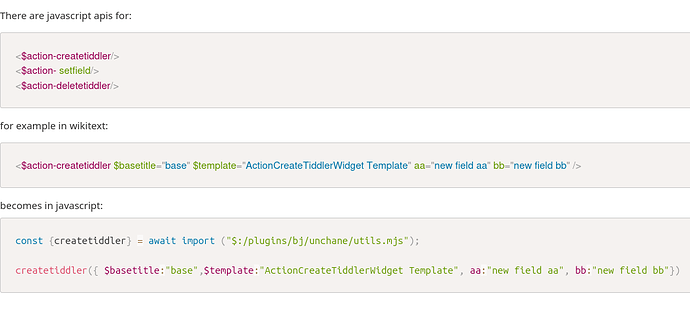What if tiddlers were JSX render functions, and widgets were react components? The widget render tree is basically the same idea as a React render tree. TiddlyWiki markup is basically JSX (with a few annoying quirks). We could probably even use something like react-jsx-parser, which is built on acorn and appears significantly smaller than the full 3MB that something like ESBuild takes.
Variables could easily use be implemented using react context. The tiddler store could be enhanced with RxJS and components could subscribe to individual tiddler changes or react dynamically to wiki events. Message bubbling can also be implemented using context.
Widgets would receive a set of functions which they would use to tie into the various services. Things like message bubbling and tiddler subscriptions would be implemented in core and then exposed via an API of sorts using React hooks.
Nearly every concept which the render tree currently has can be directly translated to React. Even filters and lists work just fine. The children of the $List widget take their item and index from the state variables. The react version of this would just render children inside a variable context.
Many things would need to be memo-ized, but that can be abstracted away inside custom hooks and memo-ed components.
The only thing I’m not sure how to add is Typescript. Without typescript, a lot of this feels pointless. However there are some ways which JSDoc comments can be strategically and effectively used to accomplish this.
